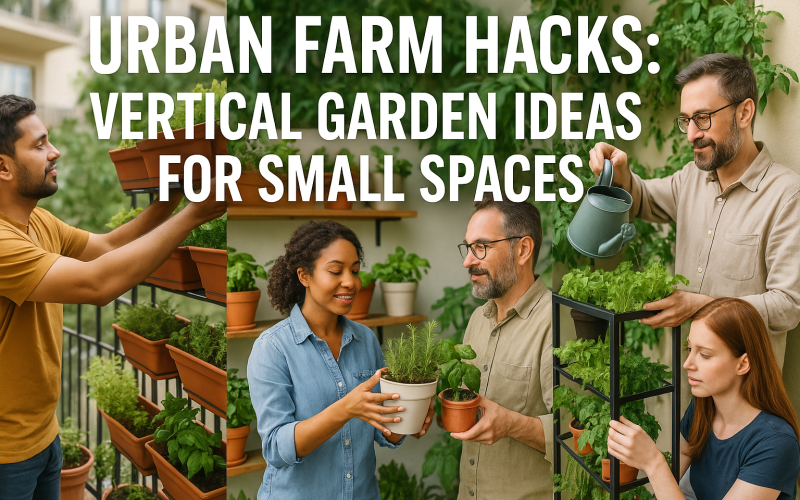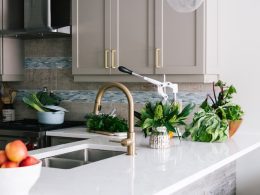Introduction
Living in a city doesn’t mean you can’t grow your own food. With the rise of urban farming, many city dwellers are turning to vertical gardens to make the most of their limited space. Whether you have a small balcony, a rooftop, or even just a wall, vertical gardening is a fantastic way to bring nature into your home and grow fresh produce right in your urban space.
In this article, we’ll explore some easy and creative vertical garden ideas or benefits of vertical gardening that will help you create your own urban farm in even the smallest of spaces. These ideas are perfect for beginners and anyone looking to maximize their gardening potential in the city.
What Is a Vertical Garden?
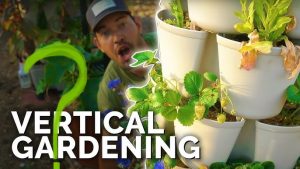
A vertical garden is a way of growing plants in a vertical garden space rather than horizontally. This method allows you to use walls, fences, or other upright structures to support plants. It’s perfect for small spaces because it maximizes the use of vertical space and minimizes the need for a large footprint. Vertical gardens can be used for growing herbs, growing vegetables, pole beans, flowers, potted plants, and even small fruit plants.
In an urban farm, using a vertical garden is an efficient way to grow fresh produce without taking up much room. Plus, it adds a natural, green aesthetic to your living environment. Whether you’re looking to create a functional vegetable garden or simply want to add a touch of greenery to your apartment, vertical gardening can make it possible in even the most compact urban spaces.
Vertical Garden Ideas for Small Spaces
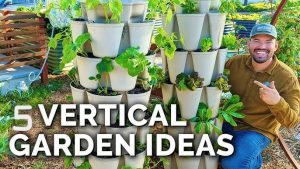
Let’s dive into some creative vertical small garden ideas that will help you maximize the potential of your urban farm.
1. Wall Planters and Vertical Shelves
Wall planters are one of the easiest ways to create a vertical garden in a small space. These can be attached to the wall using shelves, hooks, or specially designed planters. You can place them along your balcony railing or hang them inside your apartment.
Choose a variety of plants, such as herbs, succulents, or small vegetables. By using vertical shelves, you can create multiple layers of plants, making the most of your space. Opt for lightweight pots or containers to avoid heavy loads on your walls.
2. Hanging Vertical Gardens
Another great option for small spaces is a hanging vertical garden. You can hang plants from the ceiling or install a vertical hanging system along a wall. This is a perfect solution if you don’t have a lot of floor space or if you want to create a stylish, green wall.
Use containers like pocket planters, wall mounted, hanging baskets, or even recycled plastic bottles to hold your plants. Hanging gardens work especially well for plants like herbs, flowers, and vine plants that can cascade down beautifully.
3. Trellis for Climbing Plants
A trellis is a simple structure that supports climbing plants. You can attach a trellis to a wall or place it in a corner of your balcony or garden. Use it to grow vine plants, like tomatoes, peas, or cucumbers, which can spread upwards rather than outwards.
Trellises are great for plants that need space to spread, but you don’t have the room for them to sprawl on the ground. These structures also help create a visually appealing and productive vertical garden.
4. Vertical Hydroponic Gardens
If you’re short on soil or want a clean and efficient way to grow your plants, try a vertical hydroponic garden. This method uses water and nutrients instead of soil to grow plants. Hydroponic systems can be stacked vertically, making them perfect for small spaces. You can grow a variety of vegetables, herbs, and even fruits.
These systems are low-maintenance and can produce high yields of fresh produce in less time. Plus, they’re great for urban environments where soil might be limited or of poor quality.
5. Repurposed Materials for Vertical Gardening
Get creative and use repurposed materials to build your vertical garden. You can transform old wooden pallets into planting shelves, hang shoe organizers on your walls for small pots, or even build your own vertical garden structure with PVC pipes.
Repurposing materials not only saves money but also helps reduce waste, making your urban garden even more eco-friendly.
Tips for Successful Vertical Gardening in Small Spaces
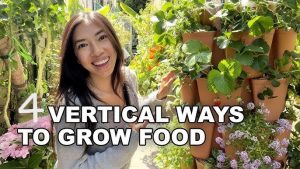
1. Choose the Right Plants
Not all plants are suited for vertical gardening. When selecting plants, make sure they can thrive in smaller spaces and in vertical positions. Opt for compact plants such as herbs, lettuce, spinach, small tomatoes, and beans. These plants do well in containers and don’t require a lot of space.
2. Use Quality Soil
Even if you’re using a hydroponic system or vertical planters, using good-quality soil is essential. Choose a well-draining potting mix that suits the plants you are growing. For indoor vertical gardens, look for soil blends designed for container gardening.
3. Provide Proper Lighting
Plants need light to grow, so it’s important to place your vertical garden in a spot with plenty of sunlight. If you’re growing indoors, consider adding grow lights to ensure your plants get the light they need. Succulents and herbs thrive with direct sunlight, while leafy greens can tolerate partial shade.
4. Watering and Maintenance
Vertical gardens can dry out quickly, so it’s important to water your plants regularly. Hydroponic systems typically require less water than soil-based gardens, but you should still monitor the water levels. Consider using a self-watering system or a drip irrigation system for convenience and to avoid overwatering, and dig drainage holes.
Future of Vertical Garden Hacks for Cities
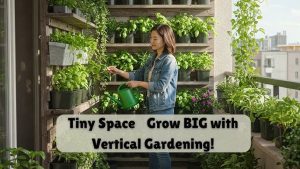
Looking ahead, vertical gardening will become more high-tech and user-friendly. We’ll see modular living wall panels that clip together for easy expansion. Smart watering systems will use sensors to deliver just the right amount of moisture. Apps could guide you on which plants to stack and when to harvest. New lightweight, recyclable materials will make planters both strong and eco-friendly. As these innovations arrive, anyone will be able to fit a small farm into their home, no matter how little space they have.
Comparative Table: Best Plants for Vertical Gardens in Small Spaces
| Plant | Best For | Why It’s Good for Vertical Gardens |
|---|---|---|
| Herbs (Basil, Mint) | Cooking and decoration | Compact and easy to grow in small pots |
| Lettuce | Salad greens | Grows quickly, space-efficient, and tasty |
| Tomatoes | Homegrown produce | Vertical growth, perfect for small spaces |
| Succulents | Decoration and low-maintenance | Drought-tolerant, perfect for creative displays |
| Cucumbers | Fresh vegetables | Vines grow well on trellises and vertical supports |
| Beans | Fresh produce | Vertical growth, perfect for small areas |
Conclusion
With vertical gardening, even the smallest space can become a thriving urban farm. In 2025, urban farms or home garden are gaining popularity, and vertical garden ideas are helping people grow their own food in limited spaces. Whether you’re using repurposed materials or advanced hydroponic systems, you can create a green oasis in your home or on your balcony and make sure of pest and disease maintaince.
By using the right plants, materials, and techniques, you can maximize your space and enjoy fresh, homegrown food. Start your own vertical garden today, and make the most of your urban environment.






